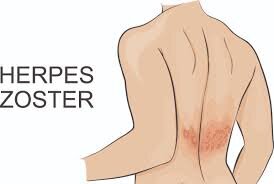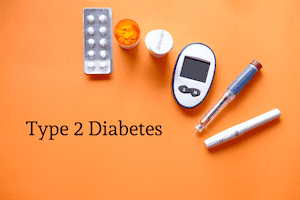Herpes Zoster (Shingles)
Herpes Zoster (Shingles) is the cause of the varicella-zoster virus, the same virus that causes chickenpox. There are some treatments for shingles symptoms, but there is no cure. There are vaccines for shingles and post-herpetic neuralgia.
Table of Contents
What is Herpes Zoster (shingles)?
- Shingles (herpes zoster) is a viral infection that causes a flare-up of a painful rash or blisters on the skin.
- It is caused by the varicella-zoster virus, which is the exact virus that causes chickenpox.
- The rash most frequently appears as a band of rashes or blisters in one area of the body.
Where do shingles come from?
- When a person has chickenpox as a child, the body fights off the varicella-zoster virus and the physical signs of chickenpox fade away, but the virus always remains in the body.
- In adulthood, sometimes the virus becomes active further.
- This time, the varicella-zoster virus makes its 2nd appearance in the form of shingles.
How common is Herpes Zoster?
- About 1 million cases of shingles are diagnosed every year in America.
- The risk of shingles improves as a person get older, with about half the cases happening in individuals over the age of 50.
- Shingles generate in about 10% of individuals who have had chickenpox at an earlier time in their lives.
Who is at risk of getting Herpes Zoster?
Individuals who have had chickenpox who are more likely to produce shingles involve those:
- With a weakened immune system (namely individuals with cancer, HIV, organ transplant recipients, or those receiving chemotherapy).
- Over the age of 50.
- Who has been ill?
- Who has experienced trauma?
- Who are under stress?
- The chickenpox virus does not leave the body after a person has chickenpox.
- Instead, the virus stays in a portion of the spinal nerve root identify as the dorsal root ganglion.
- For the majority of individuals, the virus stays there quietly and does not cause problems.
- Scientists are not always sure why the virus gets reactivated, but this typically takes place at times of stress.
What causes Herpes Zoster?
- Shingles are caused by the varicella-zoster virus, the same virus that causes chickenpox.
What are the symptoms of Herpes Zoster?
Primary symptoms of shingles can involve:
- Fever
- Chills
- Headache
- Feeling tired
- Sensitivity to light
- Stomach upset.
Other signs and symptoms that generate a few days after the early symptoms include:
- An itching, tingling or burning feeling in an area of the skin
- skin redness in the affected area
- Raised rash in a small area of the skin
- Fluid-filled blisters that break open after that scab over
- Mild to severe pain in the area of skin involved.
How long does a shingles outbreak last?
- It may take 3 to 5 weeks from the time a person starts to experience symptoms until the rash totally disappears.
- First, some days before the rash appears, a person can experience pain in an area on the skin.
- The pain is featured as itching, burning, stabbing, or shooting.
- This generally takes place prior to the rash coming.
- Next, the raised rash appears as a band or a patch, generally on one side of the body.
- The rash generally arises around the waistline or on one side of the face, neck, or on the trunk (chest/abdomen/back), but not always.
- It may happen in other areas involving the arms and legs.
- Within 3 to 4 days, the rash develops into red, fluid-filled, painful, open blisters.
- generally, these blisters start to dry out and crust over within about ten days.
- The scabs clear up about 2 to 3 weeks later.
Does a person always get the typical rash if a person has shingles?
- Typically, some individuals do not get a rash.
- If a person has any of the other symptoms of shingles (even without a rash), see the doctor as soon as possible rather than later.
- There are effective treatments a person has to take early for shingles.
- Even if a person does not have shingles, seeing the doctor will help a person to get the condition diagnosed and treated.
Appearance
- The virus travels in particular nerves, so a person will frequently see shingles happen in a band on one side of the body.
- This band corresponds to the part where the nerve transmits signals.
- The shingles rash stay put somewhat localized to an area.
- It does not extend over the whole body.
- The torso is the most affected area, as is the face.
Are shingles contagious?
- Someone with shingles can not spread shingles to another person, but they may spread chickenpox.
- The varicella-zoster virus is grown through direct skin-to-skin transmission with the fluid that oozes from the blisters.
- Shingles are infrequently extended by breathing in the varicella-zoster virus the way airborne viruses are extended.
- If the rash is in the blister phase, stay away from those who have not had chickenpox or the chickenpox vaccine and keep the rash covered.
How are shingles diagnosed?
- Shingles may be diagnosed by the way the rash is spread on the body.
- The blisters of a shingles rash generally appear in a band on one side of the body.
- Shingles also can be diagnosed in a laboratory utilizing scrapings or a swab of the fluid from the blisters.
How is Herpes Zoster treated?
There is no cure for shingles but there are treatments for managing the symptoms.
Antiviral medications
- These drugs can reduce the discomfort and make the symptoms stop sooner, particularly if a person begins them within 72 hours of the foremost sign of shingles.
- They can also help prevent the pain that may occur months and years later, called postherpetic neuralgia.
- These medications involve:
- Acyclovir (Zovirax®).
- Famciclovir (Famvir®).
- Valacyclovir (Valtrex®).
Over-the-counter pain medications
These medications involve the following and can be effective in reducing the pain:
- Acetaminophen (Tylenol®).
- Ibuprofen (Motrin®, Advil®).
Other medications
- Antibacterial drugs may be prescribed if a person develops a bacterial infection because of the shingles rash.
- Anti-inflammatory drugs namely prednisone may be prescribed if shingles affect the eyes or other parts of the face.
Other complications involve
- Other types of nerve issues such as numbness or itching.
- A bacterial infection of the shingles rash.
- Eye and ear inflammation if the rash is around these organs.
How is post-herpetic neuralgia treated?
- Treatments involve lotions or creams (like lidocaine or capsaicin) and/or other medications not particularly used for pain, like antidepressants or drugs for epilepsy.
- Regular pain relievers are not generally effective for this type of pain.
- If the pain does not lessen, a person might try therapies like nerve blocks or steroid injections near the area where the nerves exit the spine.
- The doctor might recommend an implantable nerve stimulator device for severe, ongoing pain that has not responded to other treatments.
How to Prevent Herpes Zoster?
- Two vaccines are available in the United States to decrease the chance of developing shingles and postherpetic neuralgia.
- One vaccine, Zostavax®, has been obtainable since 2006.
- The second vaccine, Shingrix®, has been obtainable since 2017.
- Shingrix is recommended as the preferred vaccine by the Advisory Committee on Immunization Practices, a group of medical and public health experts.
- Shingrix (recombinant zoster vaccine) is given as a 2-dose shot in the upper arm.
- A person should take the second dose (shot) two to six months after receiving the first.
- Shingrix has been shown to be more than 90% curable in preventing shingles and post-herpetic neuralgia.
- Its effectiveness remains above 85% for at least 4 years after receiving the vaccine.
Who should be vaccinated with Shingrix?
The Shingrix vaccine is suggested for those 50 years of age and older who are in good health. A person should get the Shingrix vaccine even if:
- A person has had shingles already.
- A person has been previously vaccinated with Zostavax (a live zoster vaccine).
- If a person has been vaccinated with Zostavax, wait at least 8 weeks prior to getting vaccinated with Shingrix.
- A person does not know for sure if a person has ever had chickenpox.
- Ask the doctor, who knows the whole health history if getting this vaccine is right for the patient.
Who should not be vaccinated with Shingrix?
The person should not receive the Shingrix vaccine if a person:
- Have sometimes had a severe allergy to this vaccine or any ingredient in this vaccine.
- Are breastfeeding (chestfeeding) or pregnant?
- Currently have shingles.
- Are ill and have a high fever.
- Have a negative test for immunity to varicella-zoster virus (take the chickenpox vaccine instead).
- Ask the doctor if the benefits of getting the vaccine outweigh any potential risks.
What dangerous side effects should a person watch for after getting the Shingrix vaccine?
Serious side effects from vaccines are extremely infrequent. Although, call 911 or go to the surrounding emergency room right away if a person experiences any of the following within minutes to hours after receiving Shingrix:
- Swelling of your face or throat.
- Difficulty breathing.
- Hives.
- Fast heartbeat.
- Dizziness, lightheadedness, weakness.
FAQ
Shingles be the cause of rash that is contagious and painful. The disease may have serious complications. The best thing a person may do to decrease the risk is to get the shingles vaccine. The vaccines are safe and effective.
Herpes zoster and cancer are connected with immunosuppression. Zoster happens more frequently in patients with an established cancer diagnosis. Current research proof recommends some risk of cancer after zoster but is inconclusive.
Very rarely, shingles may lead to pneumonia, hearing problems, blindness, brain inflammation (encephalitis), or death. For about one person in five, severe pain may continue even after the rash clears up. This pain is called post-herpetic neuralgia.
Shingles may not spread from one person to another. However, the virus that causes shingles (varicella-zoster virus) may spread from a person with active shingles to someone who is not immune to chickenpox (most individuals have had a chickenpox infection or vaccinated against chickenpox).
To decrease the risk of contracting shingles, avoid being in contact with some person who has the disease, and do not touch the fluid-filled blisters, rash, or items that can have been in contact with the blisters like clothing or towels.








2 Comments